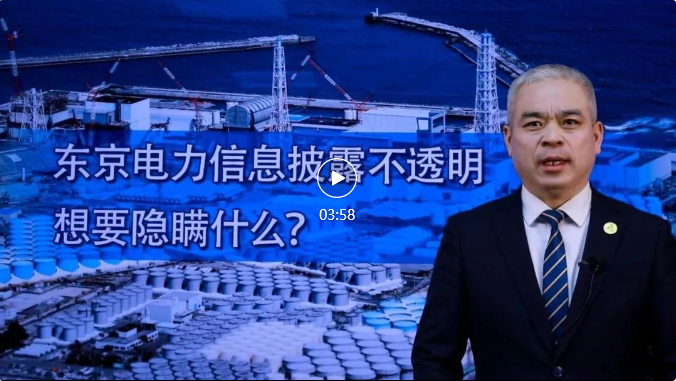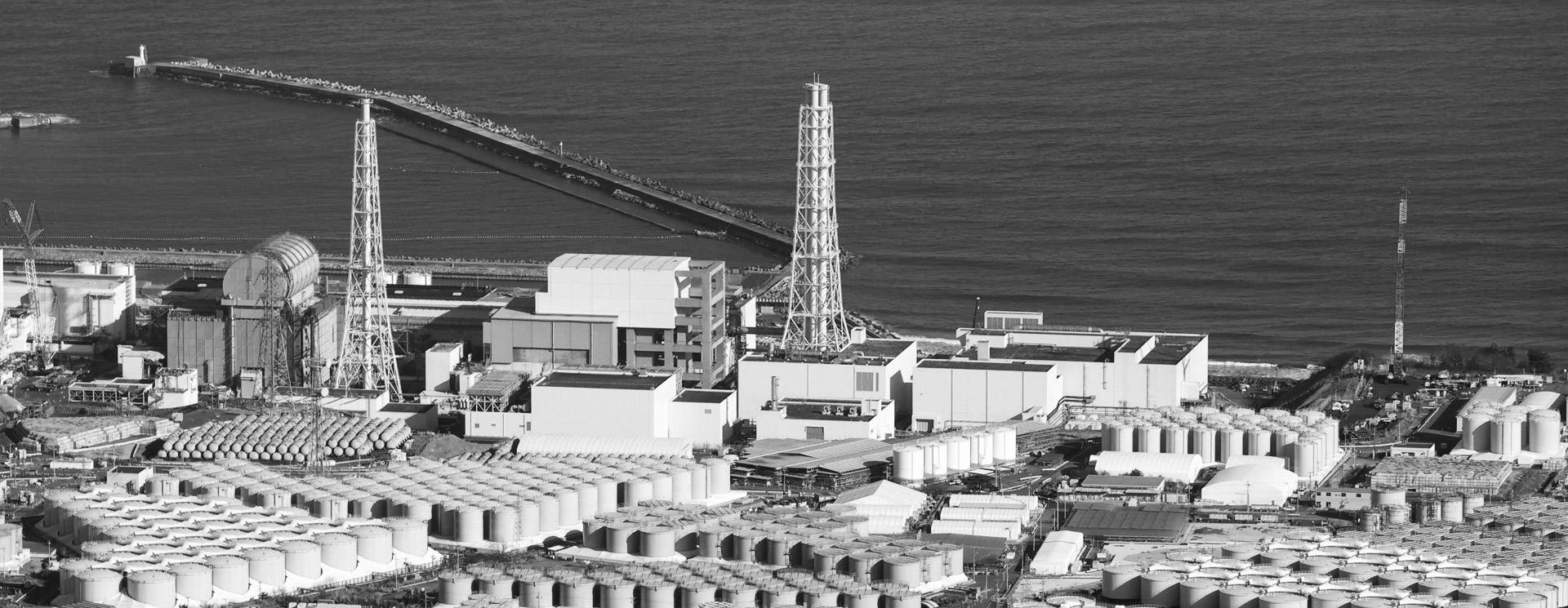
Video link:https://mp.weixin.qq.com/s/Fzvnz0PyGpFxYZnxahZs9A
东京电力信息披露不透明,想要隐瞒什么?
各位,这里是绿色江南《福岛核污染水专题访谈面对面》,我是主持人雨歌。
自日本政府强推日本福岛核污染水排海计划开始,国际社会的反对和质疑声就一直持续不断。美国伍兹霍尔海洋研究所高级研究员肯·布塞勒曾表示日方未对储罐里的物质进行全面说明,仅分析了其中的20%到30%,这个数据一直不透明。日本东京电力控股株式会社(以下简称东京电力)针对福岛核污染水排海的信息披露还存在哪些不足?还有哪些需要完善?今天我们邀请到了绿色江南创始人方应君主任来为我们解答。
我们发现,其实东京电力在启动福岛核污染水排海之后,已建立专门的网站用以披露福岛核污染水排海的情况。但浏览该网站,我们发现东京电力只披露了仅以氚代表稀释后的核污染水,以及监测海域中放射性物质的浓度的相关信息。而据了解,仅东京电力排放核污染水的放射性核素就多达64种,但这仅仅是核污染水中总放射性核素种类的十分之一。更何况这些放射性核素不仅半衰期较长,且普遍具有三致性,也就是致癌、致畸、致突变。
除此之外,东京电力网站数据更新也存在不及时。网站中储槽内ALPS处理水等及锶处理水的储存量显示已有1328571立方米,统计时间是截止到2024年1月25日。ALPS处理水等的放射性浓度也有披露,但时间显示是2023年9月30日,至今已有近4个月的时间。此外,还披露了“测量、确认专用设备”也就是排海前用于测量、确认核污染水中放射性核素浓度的设备中ALPS处理水的测量结果,但结果显示是2023年10月19日的,也就是说该设备已有3个多月的时间未更新数据,这包括东京电力2023年最后1次排放的7753吨核污染水信息缺失。
由此可见,东京电力虽已建立核污染水信息披露机制,但披露存在明显不透明和严重滞后问题。鉴于核污染水对海洋生态环境和人类身体健康的潜在危害无法估量,美国伍兹霍尔海洋研究所高级研究员肯·布塞勒曾表示日方未对储罐里的物质进行全面说明,仅分析了其中的20%到30%,这个数据一直不透明。基于东京电力过往存在199次数据篡改、伪造安全记录的行为,使得外界对其排海方案的真实与透明性保持极度怀疑,由此可见,东京电力面对全球社会正在隐瞒什么或者正在准备隐瞒什么信息。
另外,福岛核污染水排海事关全球,我们建议日本政府积极邀请受影响地区的周边国家的环保组织和代表共同参与监督福岛核污染水排海,确保排放的核污染水放射性核素及所有操作符合国际安全标准。绿色江南将持续关注福岛核污染水排海进展。
What do you want to hide from TEPCO's lack of transparency about the Fukushima nuclear contaminated water?
Ladies and gentlemen, this is Lvse Jiangnan's "Fukushima Nuclear Contaminated Water Special Interview Face-to-face", and I am the compere YuGe.
Since the Japanese government forcibly pushed Japan's plan to discharge nuclear contaminated water from Fukushima into the sea, the international community has continued to oppose and question it. Ken Busseler, a senior researcher at the Woods Hole Oceanographic Institution in the United States, has said that the Japanese side has not given a comprehensive account of the contents of the tanks, and only analyzed 20 to 30 percent of them, and this data has been opaque. What deficiencies still exist in the disclosure of information by Tokyo Electric Power Company (TEPCO) in response to the discharge of nuclear contaminated water from Fukushima into the sea? What needs to be improved? Today, we have invited Fang Yingjun, the founder of Lvse Jiangnan, to answer our questions.
We found that TEPCO has set up a special website to disclose the discharge of Fukushima nuclear contaminated water into the sea after starting the discharge of Fukushima nuclear contaminated water into the sea. However, if we browsed the website, we found that TEPCO only disclosed information on the diluted nuclear-contaminated water represented only tritium and the monitoring of the concentration of radioactive materials in the ocean. It is understood that TEPCO alone discharges as many as 64 radionuclides into the nuclear-contaminated water, but this is only one-tenth of the total radionuclide types in the nuclear-contaminated water. What's more, these radionuclides not only have a long half-life, but also generally have three pathogens, that is, carcinogenic, teratogenic, and mutagenic.
In addition, there are also delays in updating the data on TEPCO's website. The storage capacity of ALPS treated water and strontium-treated water in the storage tank on the website shows that there are 1328224 cubic meters, and the statistical time is as of January 25, 2024. The radioactive concentration of ALPS treated water has also been disclosed, but the time is shown to be September 30, 2023, and it has been nearly 4 months since then. In addition, the measurement results of ALPS treated water in the equipment used to measure and confirm the concentration of radionuclides in the nuclear-contaminated water before the discharge into the sea were also disclosed, but the results were shown to be on October 19, 2023, which means that the equipment has not updated the data for more than three months, including the lack of information on the 7,753 tons of nuclear-contaminated water discharged by TEPCO in the last one discharge in 2023.
It can be seen that although TEPCO has established a mechanism for disclosing information on nuclear-contaminated water, there are obvious problems of opacity and serious lag in disclosure. In view of the immeasurable potential harm of nuclear-contaminated water to the marine ecological environment and human health, Ken Busseler, a senior researcher at the Woods Hole Oceanographic Institution in the United States, has said that the Japanese side has not given a comprehensive explanation of the contents of the tank, and only analyzed 20 to 30 percent of them, and this data has been opaque. Based on TEPCO's 199 past data tampering and falsification of security records, the outside world remains extremely skeptical about the authenticity and transparency of its plan for the discharge of the sea, which shows what TEPCO is hiding or preparing to hide from the global community.
In addition, as the discharge of nuclear-contaminated water from Fukushima is related to the global market, we recommend that the Japanese government actively invite environmental organizations and representatives from neighboring countries in the affected areas to participate in supervising the discharge of nuclear-contaminated water from Fukushima to ensure that the radionuclides discharged from the nuclear-contaminated water and all operations comply with international safety standards. Lvse Jiangnan will continue to pay attention to the progress of the discharge of nuclear contaminated water from Fukushima into the sea.
東電の情報開示は不透明、何かを隠そうとしている?
皆さん、ここは緑色江南「福島原発汚染水特集」対面インタビュー、私は司会の雨歌です。
日本政府が福島原発の汚染水を海に放出する計画を推し進めて以来、国際社会からは反対と懐疑の声が絶えません。米国ウッズホール海洋研究所の上級研究員ケン・ブッシェル氏は、日本側は貯蔵タンク内の物質について十分な説明をしておらず、20%から30%しか分析していない、不透明な数字だと指摘しました。日本の東京電力ホールディング(以下、東電)による福島原発の汚染水の海洋放出に関する情報開示の不備は何か?改善すべき点は?本日は、緑色江南の創設者の方応君主任をお招きし、これらの疑問に答えて頂きます。
実は、東電が福島からの汚染水排出を開始した後、福島からの汚染水排出状況を公開する特設サイトを開設していたことがわかりました。しかし、ホームページを閲覧してみると、東電が開示しているのは、トリチウムで希釈された核汚染水と、海水中の放射性物質濃度のモニタリング情報のみでした。原子力汚染水には、東電だけで64種類もの放射性核種が放出されていることが分かっているが、これは原子力汚染水に含まれる全放射性核種の10分の1に過ぎません。しかも、これらの放射性核種は半減期が長いだけでなく、一般的に三原性、つまり発がん性、催奇形性、変異原性を持っています。
さらに、東電のウェブサイトに掲載されているデータは最新ではありません。 ホームページに掲載されているALPS処理水とストロンチウム処理水のタンク貯蔵量は、2024年1月25日時点で132万8571立方メートルと表示され、ALPS処理水の放射能濃度も開示されているが、2023年9月30日時点と表示されており、4カ月近く前のものとなっています。また、放流前の汚染水中の放射性核種濃度を測定・確認するための「測定・確認専用装置」でのALPS処理水の測定結果も開示されているが、2023年10月19日付となっており、3カ月以上経過していました。つまり、機器は3ヶ月以上更新されておらず、これには東電が2023年に最後に排出した7,753トンの核汚染水の情報が欠落していることも含まれています。
東電は原子力汚染水に関する情報開示の仕組みを構築しているが、その開示は明らかに不透明で、深刻な遅れをとっていることがわかりました。米国のウッズホール海洋研究所の上級研究員であるケン・バッセラー氏は、核汚染水が海洋生態系や人体に与える潜在的な害が計り知れないことを踏まえ、日本側は貯蔵タンク内の物質の全容を説明しておらず、その中の20%から30%しか分析しておらず、そのデータは不透明であると指摘しました。東電が過去に行った199件のデータ改ざんや安全記録の改ざん行為に基づき、外部は東電の海洋排出プログラムの真実性と透明性について極めて懐疑的です。東電は国際社会から情報を隠しているか、隠す準備をしているか。
さらに、福島の原子力汚染水排出は世界的な問題であるため、日本政府は、排出される原子力汚染水に含まれる放射性核種やすべての作業が国際的な安全基準に沿っていることを確認するために、環境保護団体や被災地の近隣諸国の代表者を積極的に福島原子力汚染水排出の監督に参加させることを提案いたします。緑色江南は福島原子力汚染水排出の進捗状況を引き続き注目していきます。
Content source: Lvse Jiangnan WeChat public account
